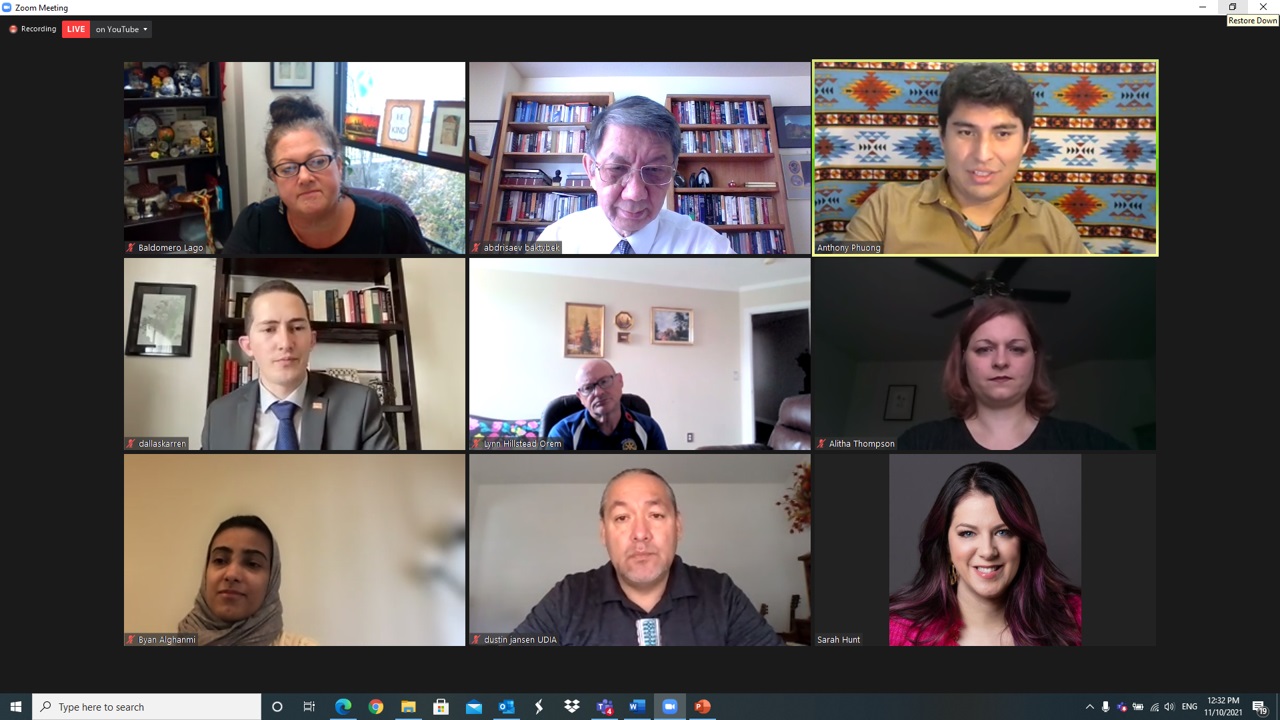

UIMF Hosts Roundtable Discussion on Bears Ears National Monument
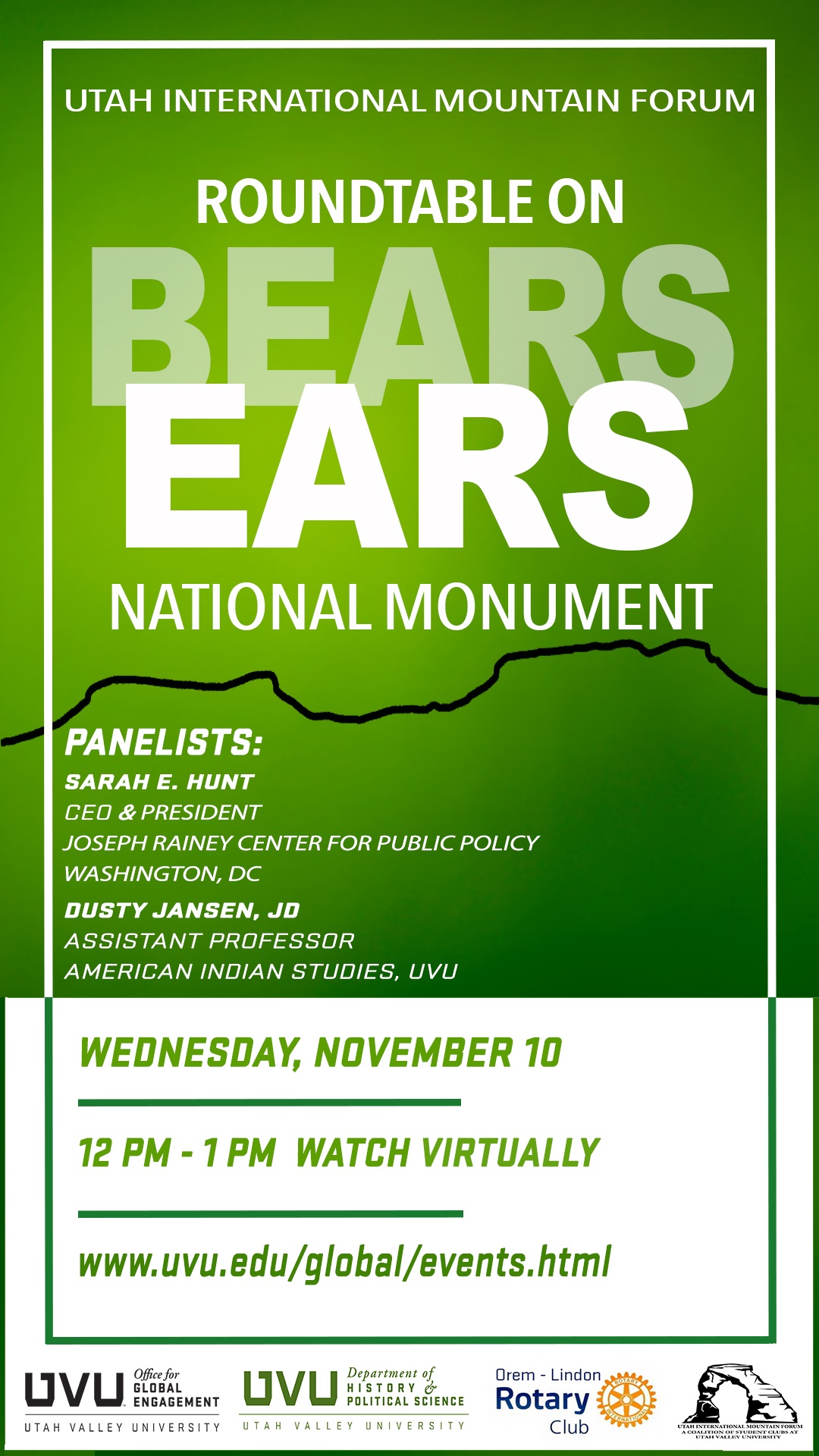
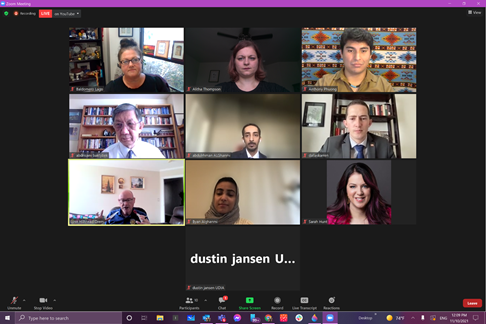
Gallery view of the panel
On November 10th, 2021, the Utah International Mountain Forum, a coalition of student clubs at UVU, hosted a roundtable discussion on the current situation of the Bears Ears National Monument. The event was co-hosted by the UVU Office for Global Engagement, UVU History and Political Science Department, and the Orem-Lindon Rotary club; and was live streamed via Youtube through the Global Engagement’s channel.
The UIMF has been proudly advocating for sustainable mountain development
since 2010 through our student-engaged learning model, also referred to as (SEL).
Through SEL, students gain professional skills by addressing real-world problems of
mountain communities as a group with faculty serving them as a mentor. This event
demonstrates how our members through SEL hosted this event. Student members of the
Utah International Mountain Forum organized and managed the event through student-engaged
learning by arranging logistics, identifying and inviting relevant dignitaries, advertising,
media coverage, and moderating the event.
Event speakers included Lynn Hillstead, Orem-Lindon Rotary club President;
Sarah E. Hunt, CEO & President of the Joseph Rainey Center for Public Policy; and
Dustin Jansen, acting Director of the Utah Division of Indian Affairs. Each of the
speakers were introduced respectively by the following students: Abdulrahman Alghanmi,
Vice-President of the UVU Sustainable Mountain Development (SMD) club; Byan Alghanmi,
President of the SMD club; and Anthony Campbell, who represented the Navajo Nation.
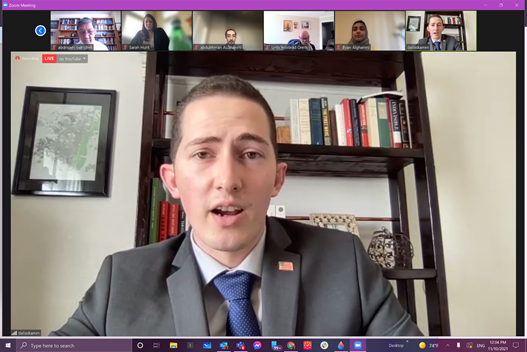
Dallas Karren, moderating the event and providing opening remarks
Bears Ears is 1.36 million acres of public lands administered jointly between the Bureau of Land Management and U.S. Forest Service and is located in San Juan County in Southeast Utah. Native Americans use the Bears Ears National Monument region for traditional and ceremonial uses, including the collection of medicinal plants, while tourists visit Bears Ears for recreational purposes. The surrounding land is rich in fossils and contains natural gas and uranium reserves.
The Bear Ears National Monument has gone through many changes over the past several years. President Barack Obama, via executive order, initially established Bears Ears as a National Monument under authority of the 1906 Antiquities Act on December 28th, 2016, recognizing it as sacred land of cultural and spiritual significance to Tribal Nations. On October 8th, 2021, President Joseph Biden reestablished and enhanced the original acreage of the Bears Ears National Monument through Presidential Proclamation 10285, which nullified and reversed President Donald Trump’s previous executive decision on December 4th, 2017 to reduce the national monument by 85%. President Trump’s reduction reflected his assertion that the monument, established by President Obama, was a federal overreach at the expense of local interests that was too extensive and covered unnecessary lands.
Utah Governor Spencer Cox and the state’s congressional members expressed concern that the monument should be promulgated through legislative means rather than executive action to avoid frequent alterations by subsequent Presidents. Additionally, the entire Utah congressional delegation and Utah Attorney General Sean Reyes have opposed the move, wishing to maintain local jurisdiction. They, along with other Utah public officials, voiced their concern in a statement from the Office of the Governor when President Biden ordered a review of expanding Bears Ears. Regarding President Biden’s recent proclamation, all four of Utah’s Congressmen and both U.S. Senators Mike Lee and Mitt Romney issued a joint public statement in Washington, D.C. and published a local op-ed, A monumental insult.
In today's event, we were able to hear opinions from some key constituencies on that matter.
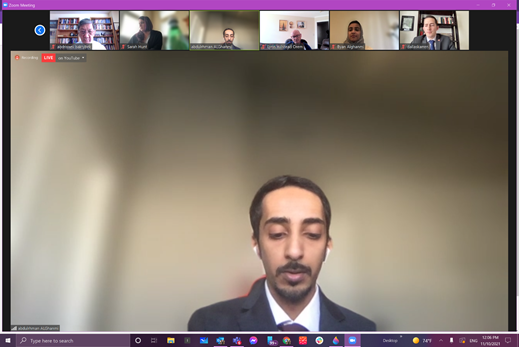
Abdulrahman Alghanmi introduces Mr. Lynn Hillstead
Lynn Hillstead was the first to speak, and he represented the members of the Orem-Lindon Rotary club, a subdivision of Rotary International (RI), and the UVU chapter of Rotaract.He spoke about the relationship between the Orem-Lindon Rotary, the UIMF, and UVU Rotaract and shared with the audience information about RI, and their initiatives.
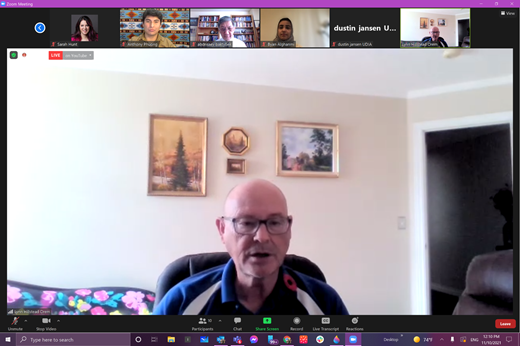
Lynn Hillstead, Orem-Lindon Rotary Club President
Rotary International, and the Orem-Lindon Rotary are non-partisan organizations. The Orem-Lindon Rotary co-hosted this event as it related to the seven goals and objectives of RI, which also encourages youth and members to be informed and involved in the community.
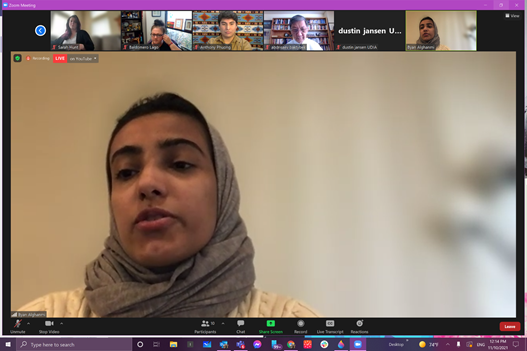
Byan Alghanmi introduces Mrs. Sarah Hunt
Sarah Hunt is renowned for her commentary on environmental law and provided the panel with an environmentalism and public policy perspective on Bears Ears.
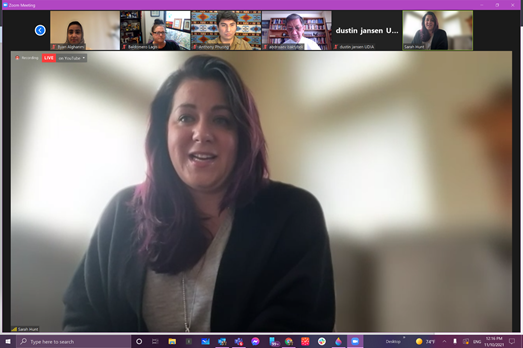
Sarah Hunt, CEO & President of the Joseph Rainey Center for Public Policy
Sarah Hunt elaborated on the natural resources in the area, and that they can and still are extracted without damaging or degrading the area. It is permissible that resource extraction can still occur on national monuments, especially if it was occurring prior to obtaining monument status. In particular, Bears Ears is one of the few domestic sources of uranium, which is very impactful for national security so as to not be dependent on other nations for this substance. Sarah also spoke briefly on clean energy and resource usage.
When something is designated a national monument, the federal government receives most of the money and manages the land. If it is land protected by Utah, the state receives revenue. The expansion of the monument costs the state an estimated $5 million USD annually. Keeping the revenue local can help the communities there.
Sarah also addressed the legal concerns about the monument, explaining the controversy over the recent executive actions. The several changes to the boundaries of Bears Ears by three Presidents has been an issue. The authority of President Trump’s decision to reduce the monument was unclear as the Antiquities Act does not provide a method for removal or reduction, and there is no established precedent to refer to. She further discussed constitutional considerations as they related to the monument, such as the 10th Amendment and state rights, and the trust relationship between Natives and the government. Sarah also spoke regarding an existing argument that Bears Ears would be more appropriate as a National Park created by Congress than a National Monument established via executive order. A natural park has certain land size requirements, and a national monument is generally smaller such as the Statue of Liberty.
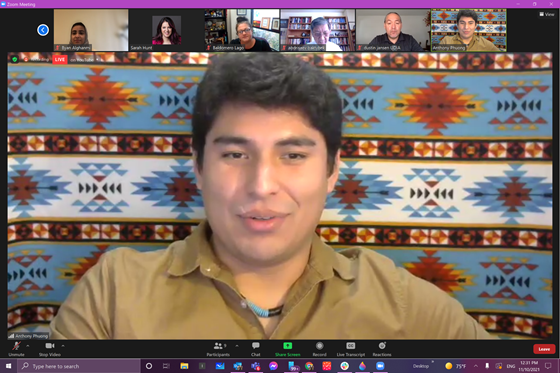
Anthony Campbell introduces Mr. Dustin Jansen
Dustin Jansen presented the views and opinions of the Navajo nation and spoke about the history of Native Americans and their perspective, grievances, and interests.
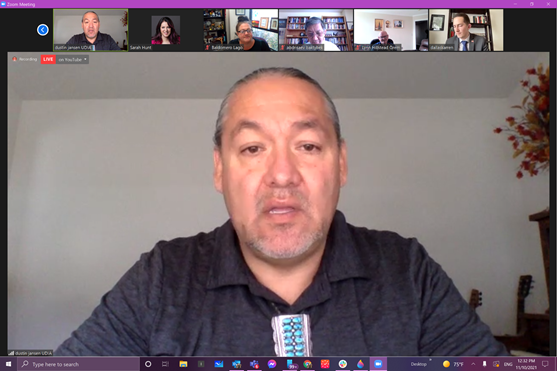
Dustin Jansen, UVU Associate Professor of American Indian Studies, and Director of the Utah Division of Indian Affairs
The reduction of Bears Ears was difficult for many of the locals. Many of the sacred sites are located off of the reservations and on federal lands. Mr. Jansen again stated that the authority to reduce or rescind national monument status is unclear, and the Native American Rights Fund is adjudicating this very question currently. Looking back, Congress had delegated a lot of land management to states, agencies, and by promulgating the Antiquities Act. Through the 1976 federal land policy and management act, Congress reclaimed their power over public lands except for the Antiquities act.
The Bears Ears region is very important to the Native people of several tribes, and has historical significance for them as well. Bears Ears, and land generally, is considered highly sacred and the practice of their religion is important in relation to geographic location. They believe in respecting the land, and getting people to understand how their religion is land-based is difficult. The inhabitants of the area also feel their needs have been ignored, and want local control and administration of the land. Dustin shared that “public perception creates public policy,” and that overlooking the people has led to an exclusion of Natives.
After the conclusion of the presentations, we had a question and answer session wherein students and members of the audience were able to ask the speakers questions relevant to the matters discussed by commenting in the livestream chat. I moderated the questions that came in from the local community and the panelists provided insight on them. Questions asked were about environmental and constitutional considerations, which also voiced concern about local interests and concerns. When it was time, I thanked our co-hosts, speakers, and those whose efforts made this event possible and provided the closing remarks.
We hope that this event will raise more awareness on the importance of a continued dialogue between all interested players in finding a solution for this crucial issue both to all citizens of Utah and the U.S.
Dallas Karren, President of UIMF
***
Video of the Bears Ears roundtable
***
Bears Ears roundtable Brochure Bears Ears roundtable Memo
***
***
District Rotary Newsletter About the Event
***
STUDENT REFLECTIVE ESSAYS
***
Anthony Campbell-Bears Ears National Monument
21-11-15-Barrett Thompson Bears Ears National Monument roundtable
21-11-16-Abdulrahman Alghanmi My Participation in the Bears Ears roundtable Discussion
22-04-10-Max Mahon roundtable on Bear Ears National Monument
22-04-10-Rachel Fisk My experience watching the roundtable on Bear Ears
22-04-10-Trevor Duncun - Bear Ears National Monument
22-04-21-Abby King, My Thoughts on Bear Ears roundtable
22-04-21-Cosette Salisbury Watching the roundtable on Bears Ears National Monument
22-04-21-Jayda Thayn - Bears Ears National Monument roundtable Reflection
22-04-21-Stephanie Dansie My Reflection on the Bear Ears National Monument roundtable
22-04-21-Wesley Keetch Bear Ears National Monument roundtable
22-04-22- Ashely Dionicio Bear Ears National Monument roundtable
22-04-22-Belle Jones Bears Ears National Monument
22-04-22-Derek Balkman Bear Ears National Monument Discussion
22-04-22-Isaac Graves Bear Ears National Monument
22-04-22-Jace Harrison roundtable on Bear Ears
22-04-22-Madison Scofield roundtable on Bear Ears National Monument Hosted
22-04-22-Savannah Wariner Bear Ears National Monument
22-04-22-Solange Dapaa Reflective essay on Bear Ears National Monument
22-04-22-Traci Rockwood Bear Ears National Monument Panel Discussion

